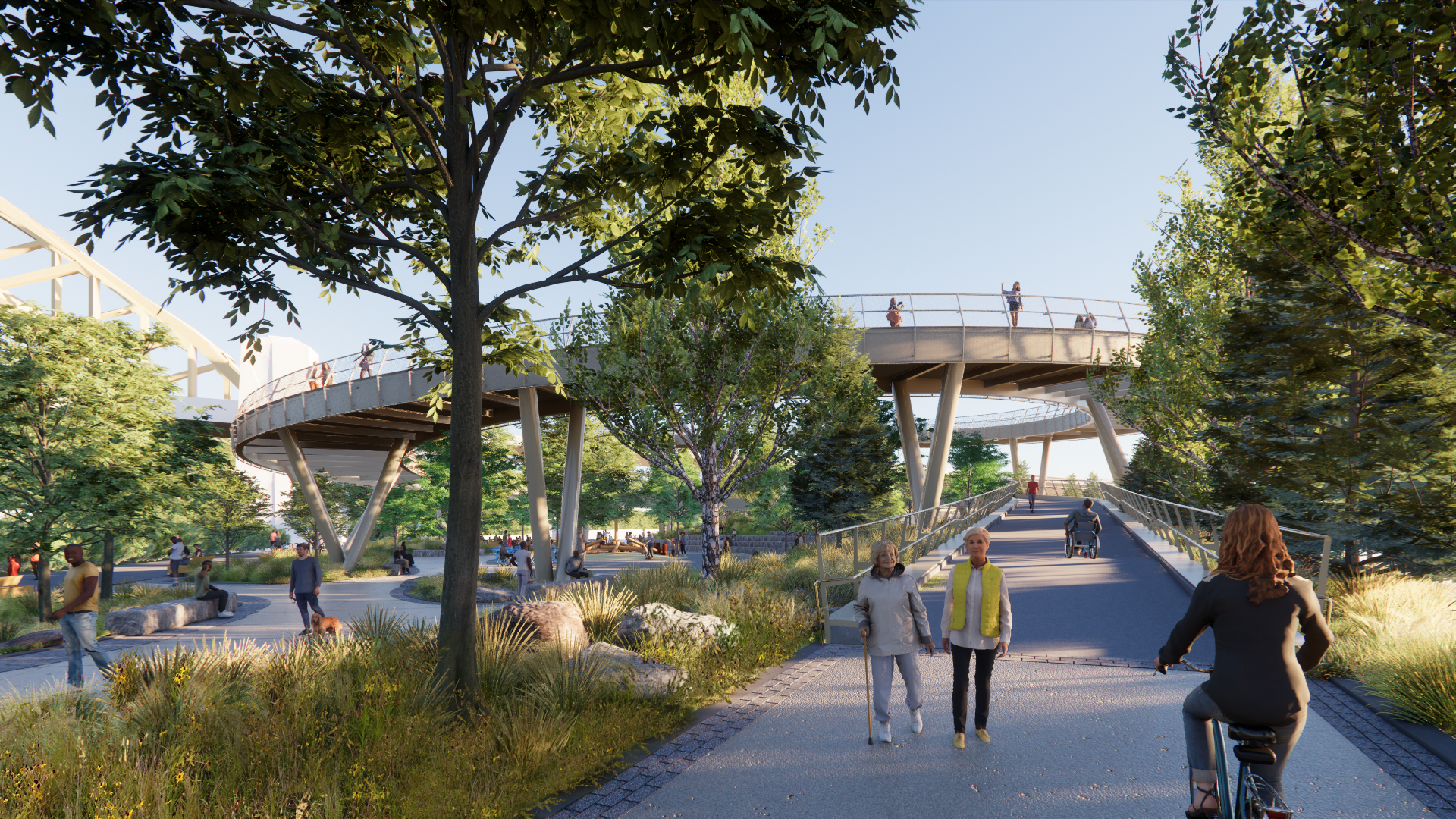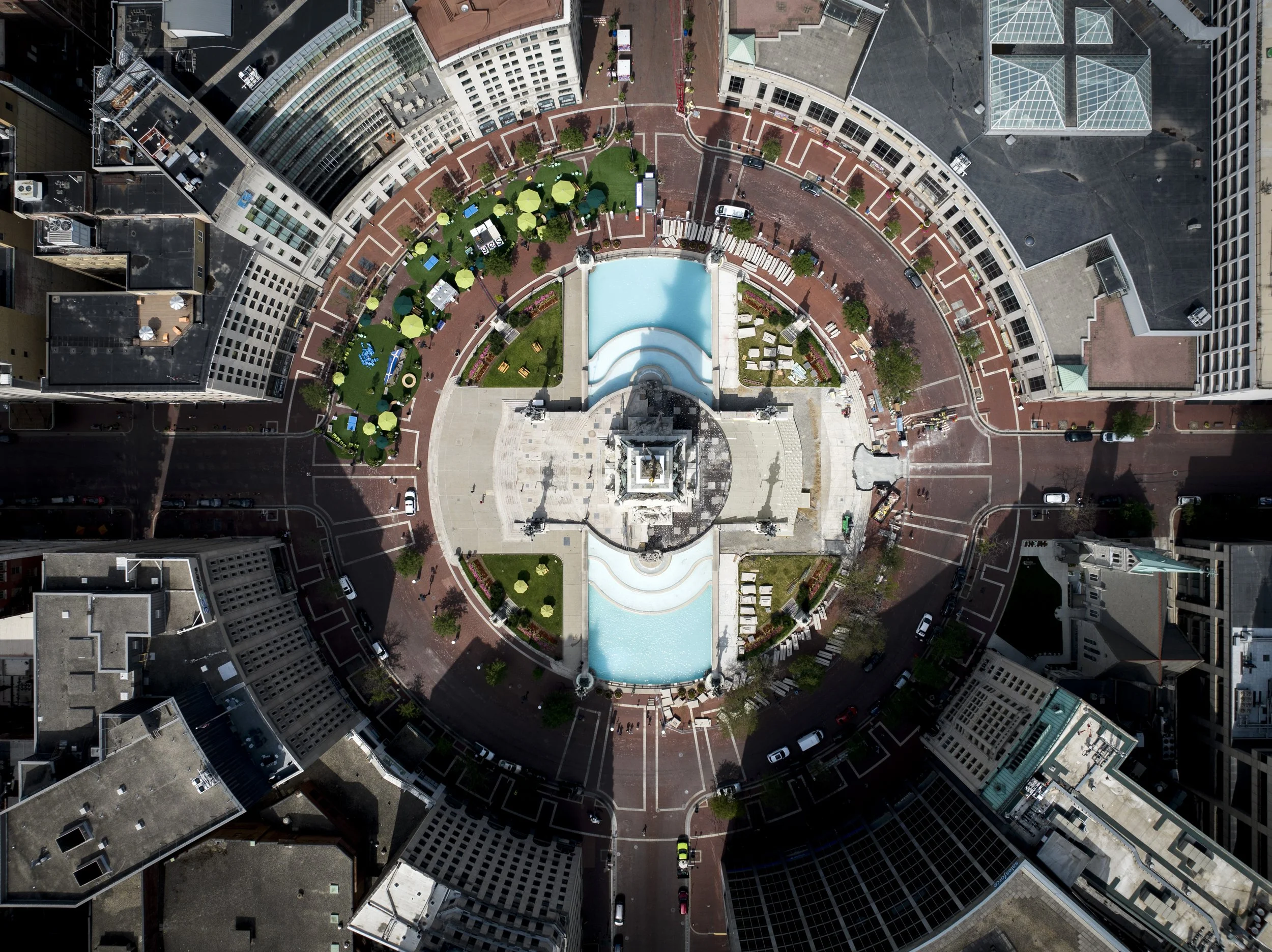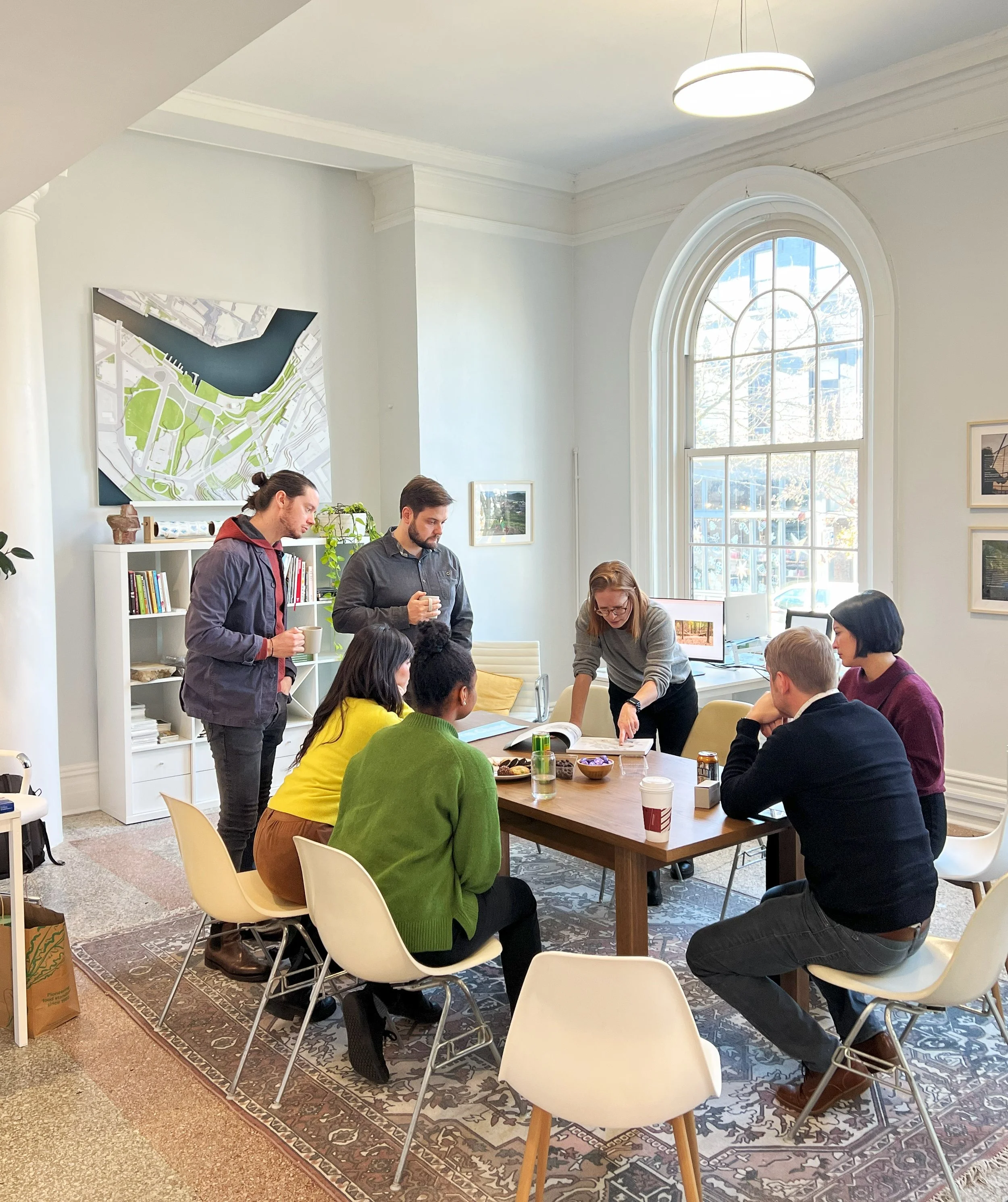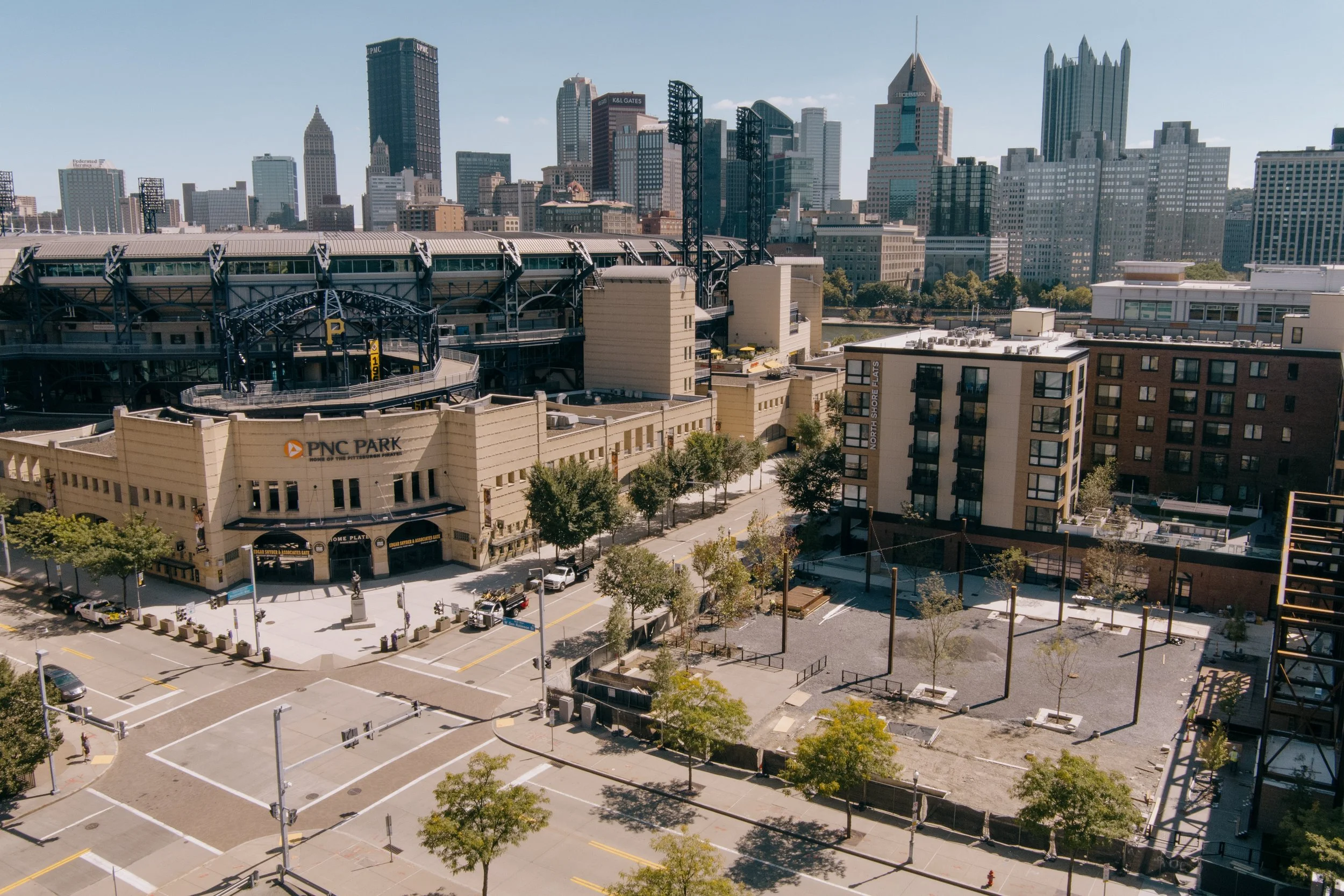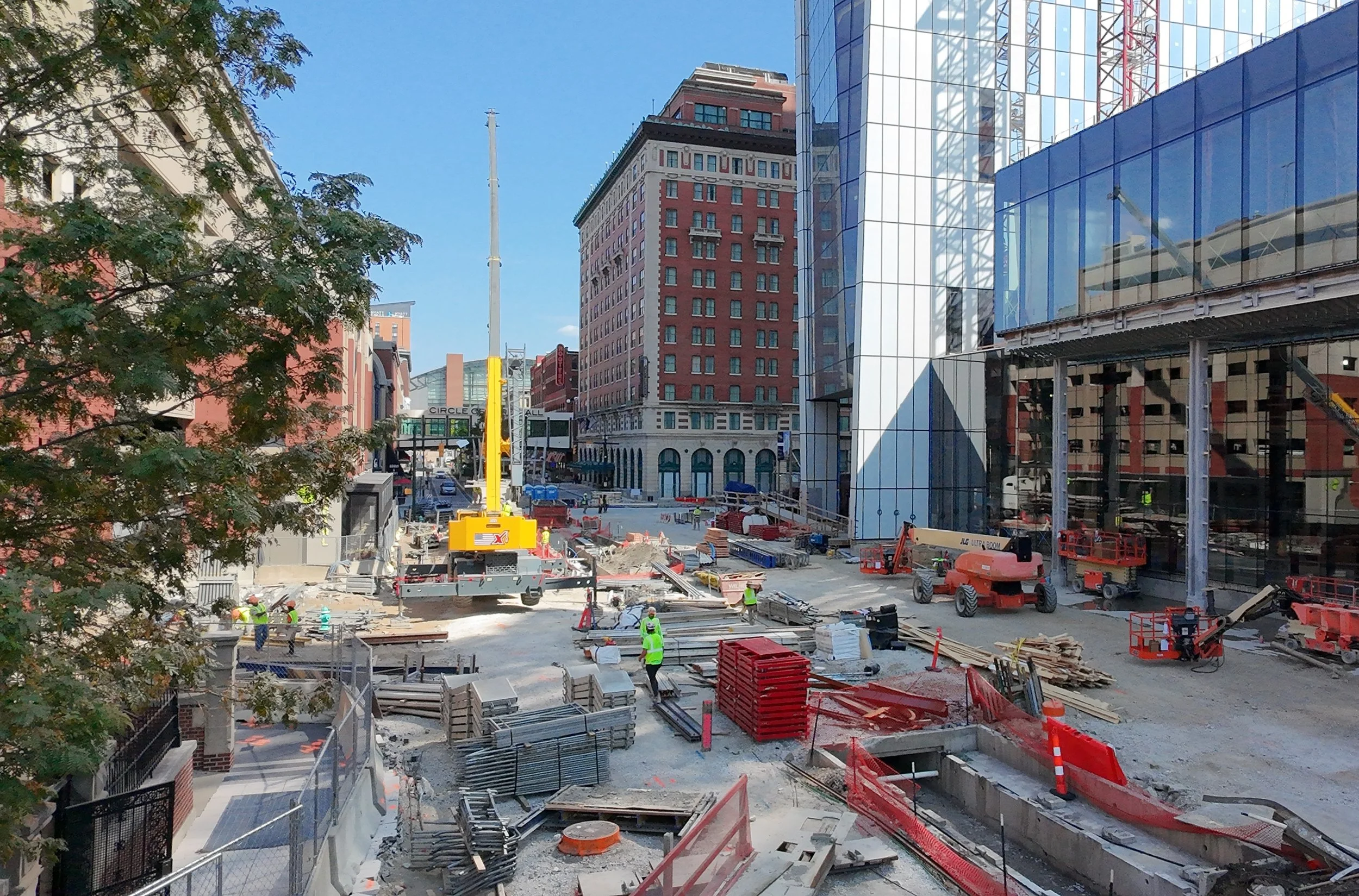Seeing Futures: Merritt Chase's Nina Chase on Public Space, Local Contributions, and Preparation
Nina Chase by Kristian Thacker.
By Julia Gamolina
Nina Chase is a landscape architect and Founding Principal of Merritt Chase. Born and raised in West Virginia, Nina graduated from West Virginia University and Harvard’s Graduate School of Design. She spent her early career in Boston designing and planning notable public parks and open spaces. Today, Nina leads Merritt Chase’s urban work, planning and designing public parks, plazas, waterfronts, and cultural districts. Nina is dedicated to the design community through teaching, writing, and advocacy.
JG: Merritt Chase has now been around for almost eight years. Where would you say you are with the practice today?
NC: Our goal has always been to work on transformative public projects in what we call Middle America – the Midwest, Rust Belt, and Appalachia. And looking back, the work of our team, with our clients, over the last eight years has been building to that – working as locally as possible on meaningful, culturally significant landscapes. We are based in Pittsburgh, PA, where I and half of the Merritt Chase team lives, and in Indianapolis, IN where my business partner, Chris Merritt, and the other half of our team lives.
A majority of our work is in Pittsburgh, Indianapolis, Cleveland and Columbus, Indiana. We are incredibly lucky to be working with partners on many of the “post card” public spaces in these cities. These are the public spaces that are often the first images you see when you Google these cities – Monument Circle in the heart of Downtown Indianapolis and Canal Basin Park along the Cuyahoga River in Downtown Cleveland. As a team, we are designers born, raised, and connected to the Middle American region. We design spaces that are of these places because it is so much of who we are as people and designers.
West End Bridge Connectors, courtesy of Merritt Chase.
Monument Circle Park for the Emerson Collective Fellowship. Photography by AJ Mast.
You studied both landscape architecture and political science! Tell me the why behind both majors.
I studied both landscape architecture and political science at West Virginia University. I didn’t quite realize how interconnected landscape architecture and political science were when I was in undergrad, but I was drawn to both. Today I can’t imagine a better combination to understand the importance of urban landscapes and the role that landscape architects play in city making. I truly believe that the public realm of a city – its streets, sidewalks, parks, and plazas – is the physical manifestation of democracy.
At their best, public spaces are where we all feel like we belong and have a sense of ownership within our community. Landscape architecture and political science are also subjects based on relationship building. Everyday we work with many different people, and often people in politics, to make projects a reality – from mayors, planning directors, and property owners to funders, neighbors, and advocates to architects, engineers, and contractors.
How did you decide to then pursue your MLA at Harvard?
WVU gave me a solid foundation in landscape architecture. Eventually, I was introduced to urban design and planning and wanted to continue to expand my understanding of how landscape architecture fit into the bigger picture of impacting cities and incorporating natural systems at an urban scale. I only applied to Harvard’s Graduate School of Design and thank god I got in. In hindsight, that was a risky move! It was the middle of the last recession and there were no job prospects.
“I truly believe that the public realm of a city – its streets, sidewalks, parks, and plazas – is the physical manifestation of democracy.”
Tell me about your experiences working for various offices before starting Merritt Chase. What did you learn that you still apply today?
I worked for a large multi-national architecture engineering firm with thousands of employees, a couple smaller locally-focused landscape architecture offices, a medium sized multi-disciplinary firm with national influence, and a very local public space focused non-profit. I’ve been reflecting recently on the ways my first non-design firm bosses really shaped how I am as a business owner. I worked for a couple of very strong small-business owners early in my life — a few specific shout outs to Sally at Hula Moon Cafe and Robin at the Bead Monster! These women taught me how to talk to people, honed my sense of personal style, and gave me a sense of responsibility and purpose early in life. I hear their voices in my head everyday.
How have you evolved personally, and how has your skill set expanded, since you started the practice?
I like to think I’ve slowed down and become more patient and confident. I’ve always known what I wanted to do; at a young age I wanted to be an architect — I didn’t know about landscape architecture until college — and then I wanted to own my own practice. I was very impatient early on and was constantly trying to prove myself to myself. As I’ve gotten older, and especially now that I have two kids, I’ve realized there is absolutely no rush. I’ve become more confident in the process of setting long range goals, slowly chipping away at them, and enjoying the process.
For anyone starting out, you also have to remember that the work of landscape architecture is very deep and wide, so it takes a lot of time to experience and understand the facets of the profession, from research, planning, and concept design to construction documentation and construction administration to business development and marketing. It all takes time.
The Merritt Chase team in Pittsburgh, courtesy of Merritt Chase.
What have you learned in the last six months?
Speaking of time! In the last six months I learned that I have syntesthesia. I imagine many designers reading this might also have this super power as well. Synesthesia is the involuntary association of one sense with another. For example I associate colors with numbers — the number three is always green to me. I assign shapes to flavors — certain wine tastes round or square to me. There is another form of synesthesia that I think directly relates to design work called ‘time-space synesthesia’ where I associate time with physical space or shapes. Essentially you can ‘see’ time. As designers I like to say that we see futures. And I think we have this ability to see futures because we can literally see time and space. We envision new spaces, we illustrate those futures with renderings, plans, and diagrams.
As landscape architects, we also have the unique ability to see spaces through time. Trees grow, cities morph, climates change. Our work has to anticipate change over time and design for it. We map out the project over time and also think about where the project sits in context of a site’s past and future. We do deep archival research to understand the history of a place – its people, its culture, its identity. With both short term temporary installations and long term investments, we work with communities to build momentum over time for the transformation of spaces. We see futures and help people make those futures realities over time.
Looking back at it all, what have been the biggest challenges for you generally? How did you both manage through perceived disappointments or setbacks?
My two biggest challenges at the moment are losing RFPs and mentally switching between working and parenting.
The most frequent professional challenge for me is the unpredictability of winning or losing work through a traditional requests for proposals (RFPs) process. The industry standard “good” win rate for a design firm is 25-35%. That means 65-75% of the time you are losing out on projects that you’ve spent a lot of time and energy thinking, writing, and strategizing. The way I manage the disappointment of not getting a project is by knowing everything builds on itself. Each time we dedicate ourselves to a proposal, we always learn something or make a new connection in the process. The results might not be immediate but a jury member might see our work and think of us for their next project or we use the writing from one losing RFP for the next one.
My biggest personal challenge is juggling parenting and working. My husband and I have two kids ages five and two, and we both work full-time. Switching between parenting and working takes a lot of mental gymnastics. My perception of time has been stretched in weird ways after becoming a parent. I was trained to work in increments of one to four hours, but parenting operates in increments of twenty seconds. Sometimes it feels like Severance leaving home to go to work and vice versa and then other times personal and professional life is really blended together. Right now I don’t feel like I have a good recommendation for how to juggle it all because we are in the thick of it, but come back in fifteen years and maybe I’ll have some more succinct thoughts!
“As landscape architects, we also have the unique ability to see spaces through time. Trees grow, cities morph, climates change. Our work has to anticipate change over time and design for it.”
Who are you admiring now and why?
Right now I am continually inspired by the 2025 Emerson Collective Fellows. At the beginning of this year, my business partner and I were named Emerson Collective Fellows and we met our fellow fellows in February. To say the experience was inspiring is an understatement. This year's theme is Local Leaders and learning from each person about the tangible, local impact they are making in their communities has been such a heartening antidote to our current national and international context.
What is the impact you’d like to have on the world? What is your core mission? And, what does success in that look like to you?
The landscape architect Hideo Sasaki said, “Contribution is the only value.” I think about the idea of contribution all the time. What do I contribute? Where does Merritt Chase contribute? How does the profession of landscape architecture contribute? What positive impact does our work have on people and places? I come from a family of contributors — my parents are both public school teachers, my sister works in public health, and my husband owns a community-focused brewery in Pittsburgh. Success to me looks like grounded, local contribution.
Current projects under construction, North Shore Plaza in Pittsburgh, PA, and Georgia Street in Indianapolis, IN. Courtesy of Merritt Chase.
Current projects under construction, North Shore Plaza in Pittsburgh, PA, and Georgia Street in Indianapolis, IN. Courtesy of Merritt Chase.
Finally, what advice do you have for those starting their career? Would your advice be any different for women?
Remember that everything builds on itself and everything takes time. Reflecting on my career, I can draw mental lines from early conversations with mentors and peers to projects that we are working on today. Sometimes the lines are pretty straight, but more often than not they are curved, loopy, with starts and stops, moving at different speeds. Remind yourself where you’ve come from and always have an eye towards where you’re headed.
I think a lot about the quote, “Luck is when preparation meets opportunity”. Be prepared, be eager, be really good at what you do. And then, put yourself in positions to have opportunities to connect with others who are also prepared, eager, and really good at what they do. I hope you are lucky enough to find those people to work with and shape your career!
This interview has been edited and condensed for clarity.

